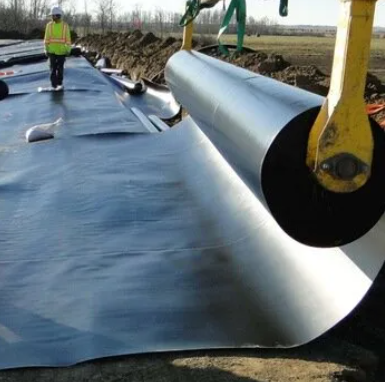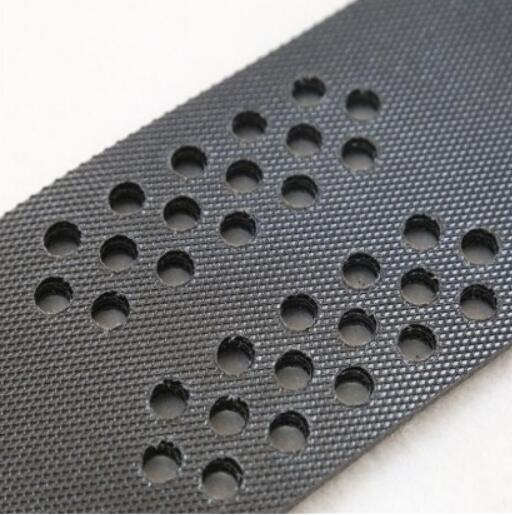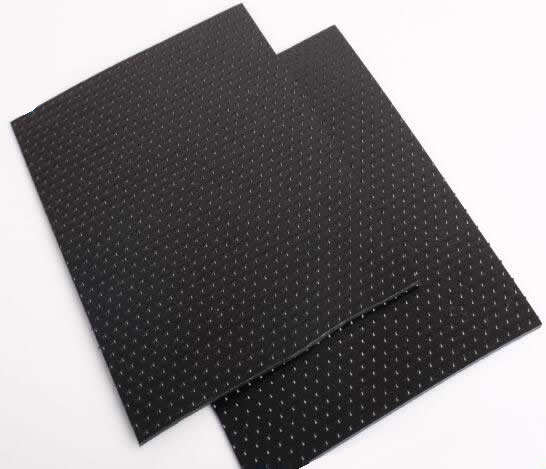- Understanding the Role of Geomembrane Liners in Waste Management
- Innovations in Geomembrane Liners for Water Management
- Geomembrane Liners: A Comprehensive Guide
- The Future of Geomembrane Liners in Civil Engineering
- Geomembrane Liners: Enhancing Landfill Stability
Manager:Alvin Wang
WhatsApp:+62 8983806051
Tel:+86 10-5797-1075
Email:steelwang@okorder.com
Address:3rd Floor, No.2 Building, No.1 Sanlihe Road
What is the raw material for HDPE geomembrane?
HDPE (high-density polyethylene) is a type of synthetic liner used in civil engineering and environmental applications such as containment, fluid barrier, and protection. The production of hdpe Geomembrane entails the usage of specific inputs that determine its unique attributes and performance properties. This article examines the materials employed during the manufacture of HDPE geomembranes, their characteristics and how they contribute to optimal products.

Understanding HDPE Geomembrane
HDPE geomembranes are a form of artificial lining material produced from high density polyethylene resin an ethylene gas derived thermoplastic polymer via polymerization. It is well acknowledged due to its strength, flexibility, chemical resistance and non-permeability which makes it useful in various containment contexts like landfills, ponds, reservoirs and wastewater treatment systems. Raw materials used in manufacturing HDPE geomembranes play an important role in determining their physical, mechanical and chemical properties.
HDPE Resin
The primary input material for making HDPE geomembrane is HDPE resin which consists of hydrocarbon groups made up of ethylene molecules. Ethylene is obtained from petroleum or natural gas as hydrocarbon gas that forms basis for production of HDPE resins through polymerization process. This occurs when ethylene molecules react chemically to form long chains of polyethylene molecules resulting into high-density polyethylene resin with particular molecular features.
Properties of HDPE Resin
Some key attributes necessary for use in geosynthetic applications include:
1.High Density: Typically ranging from 0.941 – 0.965 gcm^3 , high density characterizes high density polyethylene (HDPE) resins including those commonly used for geomembranes hence contributing to their strength, stiffness and resistance to deformation under load.
2.Flexibility: In spite of its high density, this kind of plastic remains highly flexible thus allowing it to conform to uneven surfaces, absorb ground movement and withstand dynamic loads without cracking or breaking.
3.Chemical Resistance: HDPE resin is characterized by high resistance to a range of chemicals comprising acids, solvents, alkalis and hydrocarbons which explains why HDPE geomembrane can be employed for containment applications involving hazardous wastes, industrial chemicals as well as wastewaters.
4.Impermeability: Low permeability of HDPE resins regarding liquids and gases provides efficient barrier against fluid migration and environmental contamination in such systems.
Additives and Stabilizers
In addition to HDPE resin, manufacturing process of HDPE geomembrane may involve incorporation of various additives and stabilizers that improve its performance, durability and longevity. These include:
1.Antioxidants: Antioxidants are substances used in HDPE geomembranes so as to prevent oxidation effects due to oxygen exposure, ultraviolet rays from the sun among other environmental factors. As such they help guard against early aging or weakening which could compromise their overall usage.
2.UV Stabilizers: UV stabilizers are compounds that serve the purpose of absorbing or scattering ultraviolet (UV) radiation hence shielding/protecting an HDPE geomembrane against UV-induced degradation, discoloration or embrittlements. Consequently, mechanical performance features as well as appearance characteristics shall be maintained even upon long periods of outdoor exposure through usage of these additives.
3.Carbon Black: Carbon black is an additive commonly found in HDPE geomembranes whose main functions are; providing UV resistance (stability), thermal stability and color stability. In this context carbon black dispersed throughout polymer matrix absorbs UV radiation thus dissipating it into heat thereby reducing impact of UV on the membrane being discussed here.
4. Treatment Aids: Processing aids, like slip agents, lubricants and dispersants can be included at the time of manufacture in high-density polyethylene (HDPE) geomembrane to facilitate processability; improve surface characteristics; ease extrusion, welding and installation.
Quality Control and Certification
The quality assurance of HDPE liner is closely watched throughout the manufacturing procedure to meet industry standards, specifications and performance criteria. There are rigorous tests carried out by manufacturers to determine mechanical properties, chemical resistance, dimensional stability and permeability of materials. HDPE liner may be assessed for its performance under simulated environmental conditions through laboratory tests such as tensile testing, tear resistance testing, puncture resistance testing as well as chemical immersion testing.

Conclusion
To sum up on this matter, the initial material that makes up HDPE geomembranes primarily comprises of High Density Polyethylene (HDPE) resin- a thermoplastic polymer made from ethylene gas via polymerization process. With these attributes that include high density, flexibility chemical resistance and impermeability among others make it ideal for use in geomembranes. Stabilizers and additives can then be incorporated by manufacturers during production so as to increase the efficiency or even enhance the lifespan of HDPE geomembrane. Geomembrane qualities required for containment purposes should be done within acceptable level of standards because quality control procedures guiding their prospective applications should include compliance with sector norms & regulations relating to fluids barrier & protective functions.
- Previous:What is the life of HDPE geomembrane?
- Next:What is the difference between geomembrane and HDPE?
-
2024-12-05Geomembrane Liners: A Comprehensive Guide






